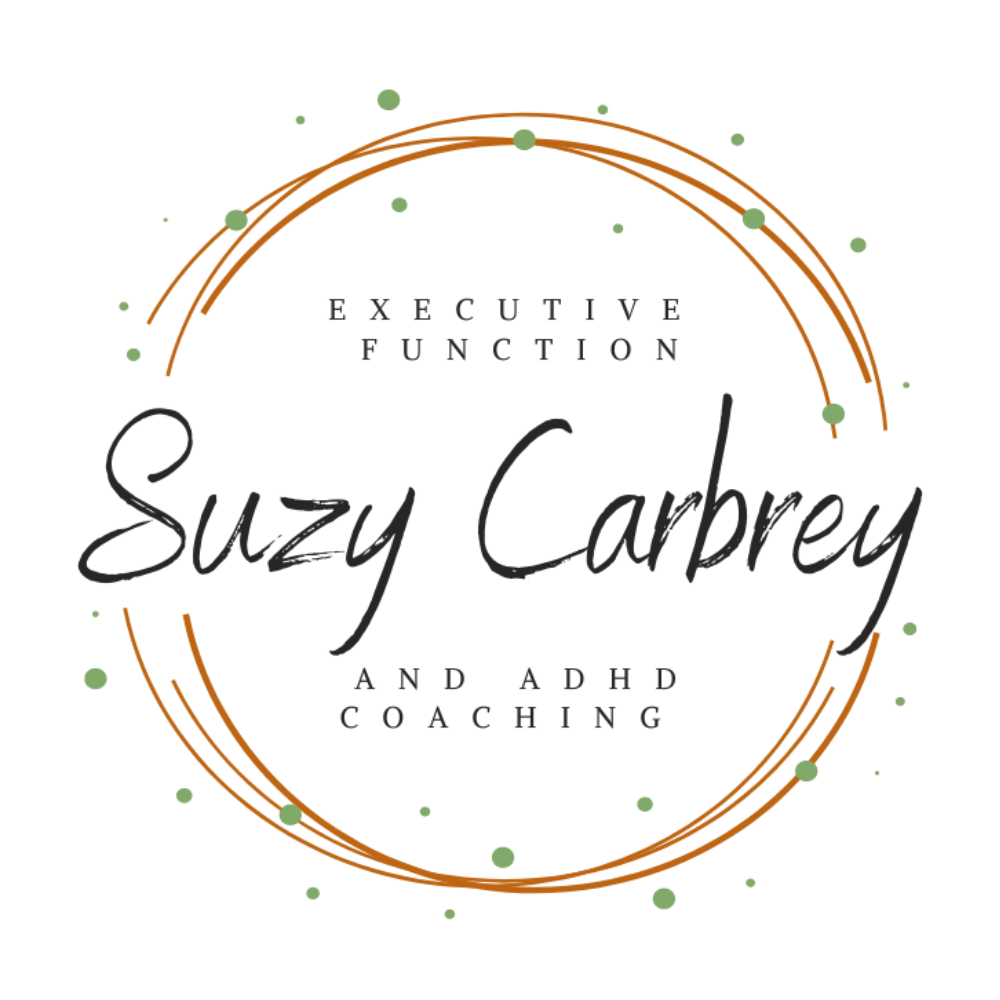If you’ve ever felt completely exhausted at the end of the day but couldn’t point to what you actually did, you’re not alone. For many adults, especially those with executive functioning challenges, the most draining work is the work no one sees: the mental load of managing life, the emotional caretaking of others, and the constant invisible labor that never gets acknowledged, let alone finished.
In this post, we’ll unpack what invisible and emotional labor look like, why they’re so taxing for people with executive function difficulties, and how to name, share, and support yourself around these unseen burdens.
What Is Invisible Labor?
Invisible labor refers to the behind-the-scenes tasks that keep life moving but often go unnoticed or unappreciated. These are not necessarily the big chores you can cross off a list; they’re the mental coordination and ongoing decision-making that make those chores even possible.
Examples of invisible labor include:
- Keeping track of everyone’s appointments and schedules
- Remembering to buy gifts, send thank-you notes, or RSVP to events
- Anticipating household needs (like restocking toilet paper or arranging childcare)
- Managing family dynamics or resolving conflicts
- Being the one who always knows “what’s for dinner” or “where the sunscreen is”
Invisible labor often disproportionately falls on women and caregivers, but anyone in a relationship, family, or household can experience it. And when you have executive functioning challenges, this kind of constant, low-level multitasking can feel completely overwhelming.
What Is Emotional Labor?
Emotional labor is the effort we put into managing not just our emotions, but also the emotions of others. It includes things like:

- Staying calm when someone else is upset
- Soothing a child, partner, or colleague
- Navigating tension or unspoken expectations
- Being “on” socially when you’re totally drained
- Swallowing your own needs to maintain harmony
While emotional labor is often talked about in the context of workplaces or caregiving, it shows up everywhere: in friendships, group texts, family holidays, and even on social media. For those who struggle with emotional regulation, mental flexibility, or working memory, the effort to constantly scan for emotional cues and keep the peace can be incredibly taxing.
Why These Forms of Labor Are Especially Draining for People With Executive Functioning Challenges
Executive functioning refers to the set of cognitive processes that help us manage time, sustain attention, plan ahead, organize, remember details, regulate emotions, and switch tasks. Invisible and emotional labor pull heavily on all of these systems.
Here’s how they intersect:
- Working memory gets overloaded when you’re trying to hold everyone’s needs in your head at once, remember deadlines, and juggle multiple tasks without forgetting anything.
- Task initiation becomes harder when there’s no clear start or finish to the work. How do you “start” anticipating what might go wrong this week?
- Planning and prioritizing suffer when you’re reacting to everyone else’s needs instead of setting your own.
- Emotional regulation is tested when you’re absorbing other people’s feelings while pushing down your own.
- Mental flexibility gets maxed out when you constantly shift gears between roles (parent, partner, friend, employee) without time to reset.
And yet because this work is often invisible, it rarely gets acknowledged. That means there’s little validation, little reward, and even less support.
The Emotional Toll of the Invisible Load
It’s not just the mental energy that gets drained. The emotional toll is real:
- Feeling like you’re always “on” and never done
- Experiencing resentment toward others who don’t notice or help
- Feeling guilt for not doing “enough” when you’re already at capacity
- Struggling with burnout, low mood, or executive dysfunction spikes
- Wondering if you’re just bad at life (you’re not)

Adults with executive functioning challenges may already feel behind or disorganized, so carrying this invisible weight can reinforce shame or self-criticism. You may internalize the message that “other people do this without a problem,” when in reality, many people are drowning in unseen tasks, they’re just hiding it better or have more support.
Why Naming It Matters
When we name something, we make it visible. And when we make it visible, we can do something about it.
Here’s what happens when we name invisible or emotional labor:
- We can stop blaming ourselves for being “lazy” or “bad at adulting”
- We can acknowledge the real work we’re doing, even when there’s no physical result
- We can ask for help or renegotiate responsibilities
- We can set boundaries around what we can and cannot do
- We can bring compassion to our own experience instead of criticism
Naming the invisible labor is a step toward self-advocacy. It helps us shift from reacting in burnout mode to creating systems that work for our brains.
How to Make Invisible Labor More Manageable
Let’s be honest: you can’t eliminate all invisible or emotional labor. But you can take steps to manage it more intentionally, reduce overwhelm, and preserve your energy.
Here are some strategies:

1. Externalize the Mental Load
Don’t try to hold everything in your head. Get it out:
- Use a shared calendar (Google Calendar, Cozi) for appointments and activities
- Keep a running list of recurring tasks (like birthday prep or school forms)
- Create a household checklist or command center
- Use a “brain dump” journal to offload everything swirling in your head
This reduces pressure on working memory and makes it easier to delegate or share tasks.
2. Visualize the Unseen
Use visual supports to bring invisible labor into the open:
- Write out what “mental load” you’re carrying this week
- Make a list of emotional labor you’re doing in a relationship
- Use sticky notes, flowcharts, or mind maps to organize all the unseen work
Seeing it in front of you helps clarify what’s happening and what needs to shift.
3. Use Language That Validates
Instead of minimizing the work (“It’s no big deal”), try:
- “I’ve been managing a lot of moving parts lately.”
- “Keeping track of all this has been mentally exhausting.”
- “I’m doing a lot of background work to keep things running.”
This helps others understand and helps you feel seen.
4. Share the Load (When Possible)
If you live with a partner, family member, or roommate:
- Have a conversation about invisible labor. Use tools like the “Fair Play” cards or the “You Should Have Asked” comic by Emma.
- Trade off full responsibility for certain areas (e.g., one person fully manages laundry, the other meal planning).
- Practice true delegation not just “helping,” but ownership.
If you live alone, think about what tools, apps, or community resources could ease the mental burden.
5. Set Emotional Boundaries
Emotional labor often piles up when we feel responsible for other people’s feelings. Try:
- Noticing when you’re over-functioning for others
- Giving yourself permission not to “fix” everyone’s mood
- Using phrases like “That sounds hard, do you want to talk or just vent?”
- Protecting quiet time or decompression time after social interactions
It’s okay to care without carrying it all.
6. Schedule Recovery Time
Because invisible and emotional labor are ongoing, you need intentional rest, not just physical rest, but cognitive and emotional rest.
Ideas:
- Build in white space between activities
- Use “transition rituals” to mark the end of a mental task
- Try nonverbal hobbies like puzzles, art, or movement
- Get outside and let your brain wander
Even 10–15 minutes of restorative time can refill your tank.
Gentle Self-Reflection: What’s Yours to Carry?
Not all invisible labor can be dropped, but not all of it is yours to carry, either.
Ask yourself:
- Which invisible tasks am I holding that others could share?
- Which ones are no longer serving me or my values?
- Where could I simplify or lower the bar?
- What expectations have I absorbed that I never agreed to?
This kind of reflection helps you move from “default mode” into intentionality.
Invisible Work Still Takes Real Energy
If you feel like you’re running on empty from all the unspoken responsibilities, it’s not because you’re lazy or incapable. It’s because the labor you’re doing isn’t designed to be visible. But your brain and your energy deserve to be honored.
When you name the load, make it visible, and advocate for systems that support your way of processing, you’re not just surviving, you’re rewriting what sustainable functioning looks like.
Your way of thinking is valid.
Your capacity deserves respect.
And your well-being matters just as much as the to-do list.
Conclusion
Invisible and emotional labor may not show up on a checklist, but they take a real toll, especially for adults with executive functioning challenges. This kind of unseen work pulls at your energy, your attention, and your emotional reserves, often without validation or support. But you’re not imagining it. It is exhausting to manage the background hum of planning, caregiving, anticipating, and smoothing things over.
The good news is that once you start naming this labor, you can begin to shift it. You can externalize it, share it, speak about it more clearly, and make choices about what’s truly yours to carry. Even small shifts like a shared calendar, a validating phrase, or a moment of quiet decompression can help lighten the load.

You don’t have to carry it all to be doing enough.
You don’t have to fix everything to be valuable.
You don’t have to see it all to deserve rest.
Give yourself credit for what you’re managing, even when it’s invisible to others. That’s not weakness, it’s wisdom.
Learn more with Online Coaching for Executive Functioning / ADHD
Ready to gain control and enhance your executive functioning? As an experienced and compassionate coach, I specialize in providing support for executive functioning and ADHD. To embark on your journey, please reach out to me at 708-264-2899 or email hello@suzycarbrey.com to schedule a FREE 20-minute discovery call consultation.
With a background as a speech-language pathologist, I have a strong foundation in executive functioning coaching. My graduate degree program in SLP placed a significant emphasis on cognition, including executive functions, and I have years of experience in medical rehabilitation, providing cognitive-communication therapy. Additionally, I have completed an ADHD Services Provider certification program, I am Solutions-Focused Brief Therapy Diamond Level 1 certified and I am trained in the Seeing My Time® executive functioning curriculum.
Experience the convenience and effectiveness of online coaching, backed by studies that demonstrate equal results to in-person services. Parents, professionals, and emerging adults love the convenience and privacy of receiving coaching from their own homes.
Whether you reside in Chicago, Milwaukee, Indianapolis, Kansas City, or anywhere else around the globe, I am here to assist you. Schedule your discovery call consultation today, and I eagerly anticipate the opportunity to work with you!
Please note that although I am a certified speech-language pathologist, all services Suzy Carbrey LLC provides are strictly coaching and do not involve clinical evaluation or treatment services. If you require a formal speech therapy evaluation and treatment, please inform me, and I can provide appropriate recommendations.

